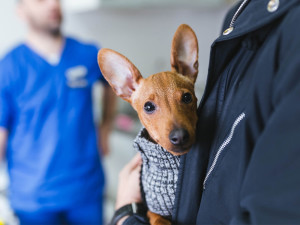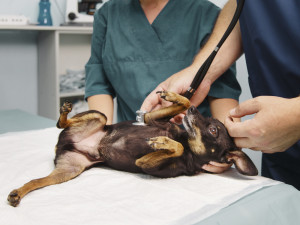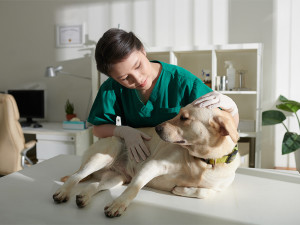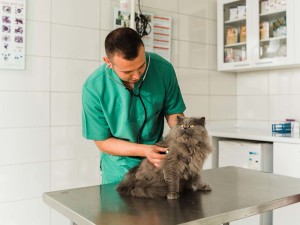How Vets Figure Out What’s Going on With Your Pet
Relying on more than just tests, here’s what veterinarians do to help their patients.
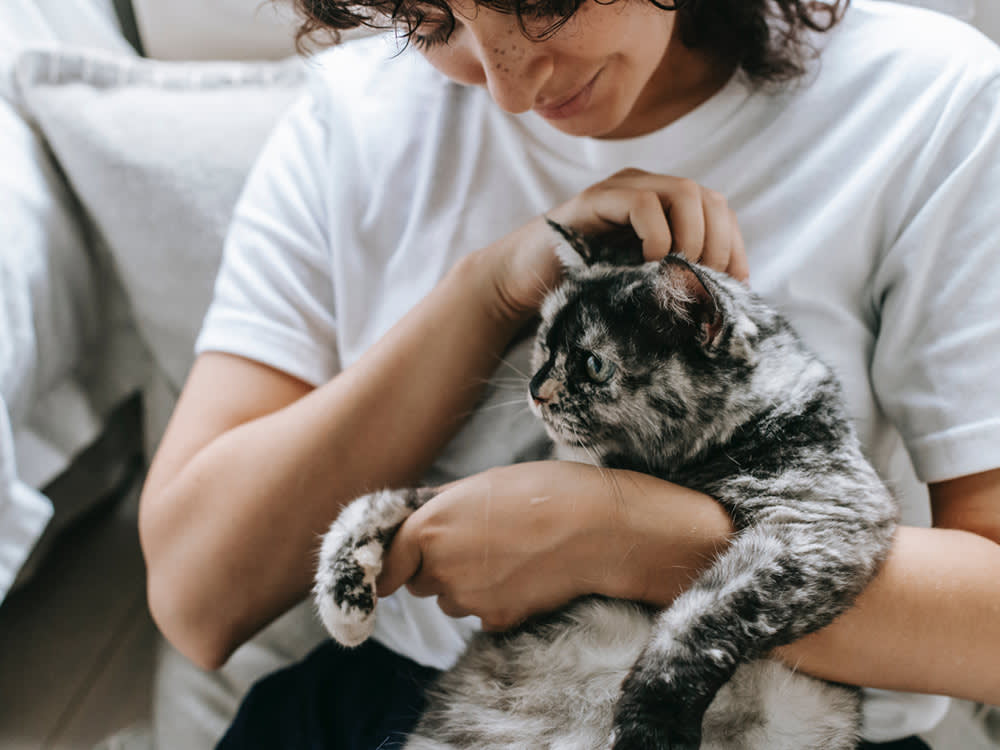
share article
“Your patients can’t talk — how do you know what’s wrong with them?” It’s a question I’m often asked. I understand why people would be curious about what a veterinarian does, but the fact that my patients cannot speak words doesn’t mean they don’t provide clues to help me put the puzzle together. Veterinarians must deduce, detect and read between the lines to reach a diagnosis. Here’s what veterinarians do to help their patients.
How Vets Diagnose Pet Symptoms
Information from pet parents.
A vet will gather as much information as possible from the history provided by pet parents and perform a physical exam. Veterinarians know that although high-tech equipment and testing may be available, they may also be out of a client’s price range. Most of my patients do not have insuranceopens in a new tab, so I must justify every test to a client while they weigh the expense. It’s a veterinarian’s job to interpret the pet’s body language and ask questions to acquire relevant information. They’ll ask clients for their opinion and gather details from their descriptions: “Charlie cried when you picked him up?” “How were you holding him, exactly?” “Where did you put your hands?”
Feel the pet’s body for signs.
As thorough as veterinarians can be with their physical exams, they also trust pet parents to bring matters to their attention. An excellent example of this is finding lumpsopens in a new tab, as many masses are first seen and/ or felt at home.
To check for a painful abdomen, a vet will palpate the area, watching closely for signs of discomfort as they feel for tension in the muscles. Touching can, at times, lead to a diagnosis. For example, lymphoma is a type of cancer that can cause swollen lymph nodes. I still remember the first time I diagnosed it: I was looking at the client as she described her dog’s recent lethargy and lack of appetite when my fingers found the telltale swellings. Lymphoma is not the only cause of enlarged lymph nodes, but it’s a definite concern whenever they are found. Communication through touch is also a way for vets to interact with their patients to soothe them.
Listen to the pet’s sounds.
Other senses, like hearing, come into play as well. A coughopens in a new tab can have a multitude of causes, ranging from mild (like a kennel coughopens in a new tab virus) to severe (congestive heart failure or cancer in the chest). With the benefit of experience, veterinarians know what a choking animal looks and sounds like compared to, say, a honking noise. We also know which breeds are subject to specific problems. For instance, Yorkies opens in a new tabare prone to collapsing tracheas, and laryngeal paralysis is common in older Labs.
Assess the pet’s body language.
Veterinarians are always watching, even when they appear to be busy doing something else. During a typical exam, there are at least three of us in the room: the doctor, the patient, and the client. At times, it may look like a vet is just speaking with the client and asking questions (“When did the vomiting opens in a new tabstart?”), but they’re also observing the pet. Is the cat anxious? Do they appear to be in pain? Are they walking or standing normally, or hunched as if uncomfortable?
If I know the patient well, it’s even better, because I have an idea of what’s normal for that individual pet; perhaps a typically rambunctious dog is lying quietly on the floor, which may be customary for some dogs, but is definitely “not him.” If a veterinary technician is present, I’ll solicit their input; perhaps they notice something I’ve missed.
Check for unusual smells.
Smell is an important tool, and it is sometimes the first indication of infection. Unwrapping a bandage, your vet might know right away that antibiotics are needed. Yeasty ears have their own smell. Vets sometimes suspect kidney diseaseopens in a new tab from an animal’s breath; Uremic breathopens in a new tab is a telltale sign to perform blood tests to confirm it. Diarrhea from parvovirus has a distinct smell, even worse than regular diarrhea. (Fortunately, an antidote for all these unpleasant smells exists: puppy breath. No wonder everyone working at the clinic lines up to smell the sweetness of a puppy.)
Review environment and diet.
Occasionally, while we can tell that something is wrong with an animal, the symptoms are vague. Many vets term these cases ADR, which stands for “aint’ doin’ right.” With these patients, I am especially interested to know if anything has changed in the animal’s environment, diet or behavior. Sometimes, stress can be a factoropens in a new tab, and it can be difficult to determine whether a problem has a medical or behavioral cause. For example, during the holiday season, I routinely ask my ADR clients whether they have decorated for the holidays because this can be a source of stress for many pets which may cause unusual behavioral changes.
Karen Fine, DVM, CVA
Karen Fine is a holistic veterinarian who practices integrative medicine and operates her own house-call practice in Worcester, Mass. Her free “Guide to Writing a Pet Obituary” is available on her website.
Related articles
![A dog getting checked out at the vet]() opens in a new tab
opens in a new tabWhat to Expect At the Emergency Vet
It's every pet parent's nightmare — but knowing what happens when you take your dog to the ER can make the experience a little less stressful.
![A vet and a vet tech check up on a happy grey kitten in the office]() opens in a new tab
opens in a new tabHow to Find a Vet Who Loves Your Cat Like You Do
I had to kiss a lot of frogs to find the perfect vet. Luckily, veterinarian Dr. Annette Louviere has some tips so you don’t have to, too.
![A female veterinarian examining a dog.]() opens in a new tab
opens in a new tabWe Need to Talk: There’s a Serious Veterinarian Shortage Right Now
As a pet parent, the best thing you can do is be nice.
![a veterinarian holding a gray fluffy cat]() opens in a new tab
opens in a new tabHow to Make Vet Visits Less Scary For Cats
Two vets share their tips, from choosing a safe carrier to considering anti-anxiety medication.
![Smiling veterinarian examining medical documents of a Bulldog standing on her examination table]() opens in a new tab
opens in a new tabHow to Give Your Dog a Blissful Vet Visit
Reduce the stress of veterinary visits — for you and your pup.
